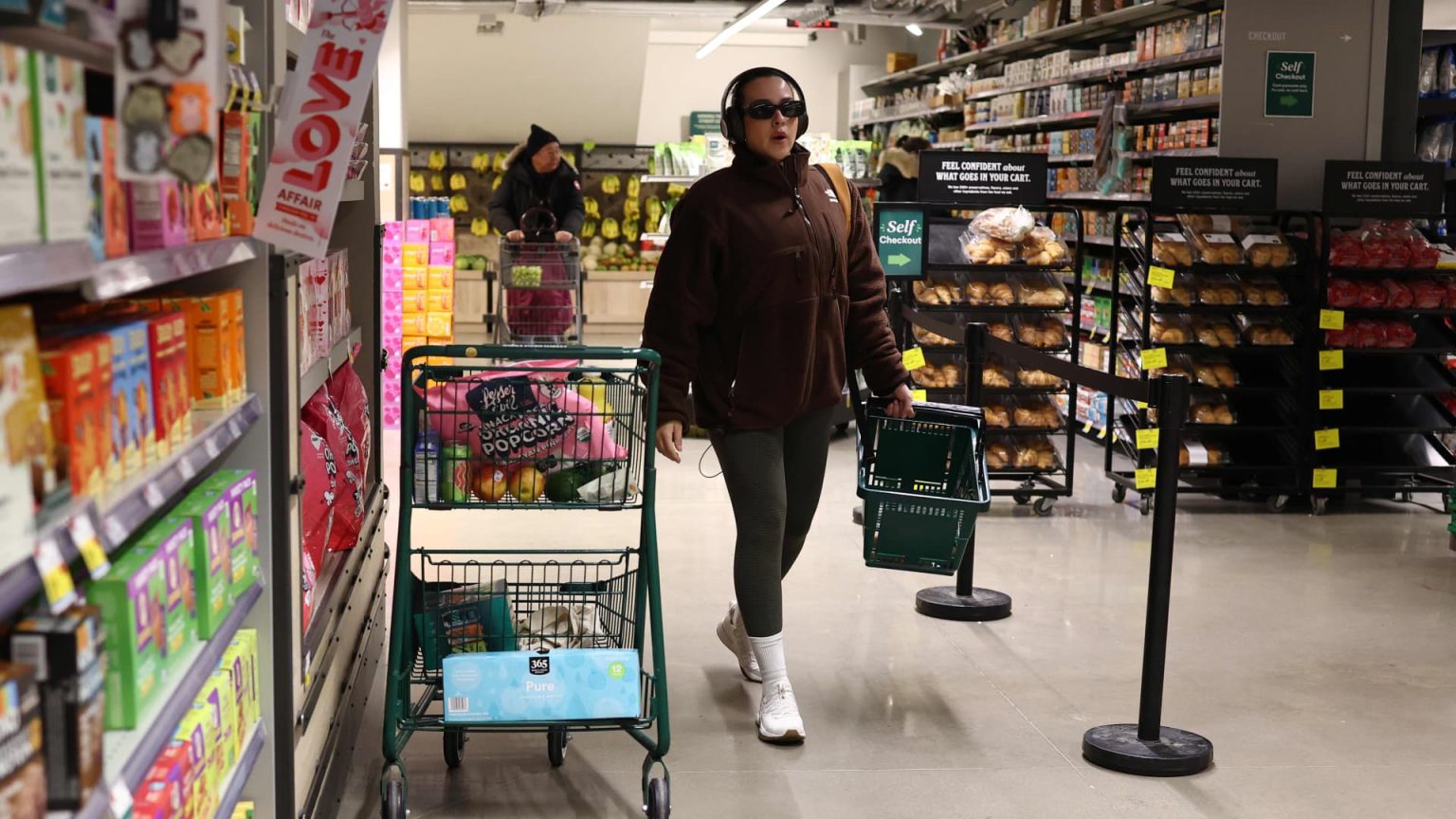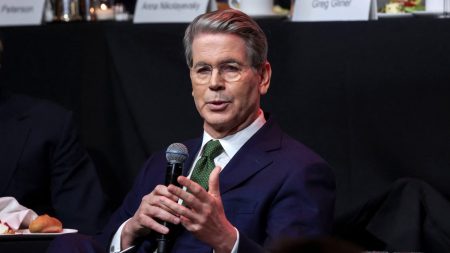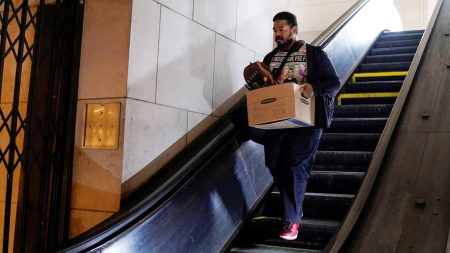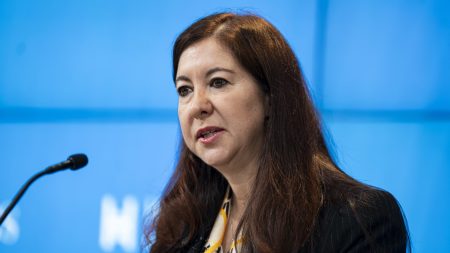Consumer Sentiment Takes a Hit as Inflation Fears Surge
The month of February 2025 brought an unwelcome reality check for American consumers, as fears of rising inflation spiked dramatically. A closely watched University of Michigan consumer survey revealed a sharp increase in worries about near-term inflation, driven largely by President Donald Trump’s aggressive tariff policies against major U.S. trading partners. As the data rolled out, one thing became clear: consumers are bracing themselves for higher prices in the year ahead, and their optimism about the economy is taking a significant hit.
The survey, conducted between January 21 and February 3, showed that the percentage of respondents who expect the inflation rate to be 4.3% a year from now jumped by a full percentage point compared to the previous month. This marked the highest level since November 2023 and only the fifth time in 14 years that such a large one-month increase had been recorded. Joanne Hsu, the survey’s director, highlighted that many consumers are now worried that high inflation will make a comeback within the next year. This sentiment suggests that the economic concerns of everyday Americans are being shaped by the looming threat of price increases, particularly in essential goods and services.
Tariffs and Trade Tensions Shake Consumer Confidence
While President Trump delayed tariffs against Canada and Mexico, the broader impact of his trade policies continued to weigh heavily on consumer sentiment. The threat of price increases due to tariffs, as well as China’s retaliatory measures, created a sense of uncertainty that resonated deeply with shoppers. The survey results made it clear that the specter of higher costs is leaving a lasting impression on how people feel about their financial future.
Perhaps more concerning is the fact that the decline in optimism was not limited to any particular group. Hsu noted that the drop in sentiment was "pervasive," with Republicans, Independents, and Democrats all expressing lower levels of confidence compared to January. This bipartisan unease underscores the widespread nature of the economic concerns, cutting across political and demographic lines. Even more telling was the fact that consumers across different age and wealth groups expressed similar anxieties, suggesting that no one feels immune to the potential impact of rising prices.
The Broader Economic Picture: A Slowing Sentiment
The headline index, which measures overall consumer sentiment, fell to 67.8 in February—a sharp drop of 4.6% from the previous month and a staggering 11.8% decline compared to the same time last year. Economists had anticipated a reading of 71.3, but the actual number fell short of expectations. This significant downturn signals that consumers are growing increasingly pessimistic about their financial prospects, a trend that could have broader implications for the economy as a whole.
What’s even more concerning is that the current conditions index also took a hit, dropping to 68.7—a 7.2% decline from January and a 13.5% drop from the previous year. This index, which measures how consumers feel about their current financial situation, reflects a growing sense of unease about the here and now. At the same time, the expectations index, which looks ahead to the future, fell to 67.3, marking a 2.9% decrease from January and a 10.5% drop from the previous year. Together, these numbers paint a picture of an economy where both the present and the future are causing consumers significant concern.
Why Tariffs Matter: The Ripple Effect on Household Budgets
The rise in inflation fears is closely tied to the ripple effects of tariff policies. Robert Frick, a corporate economist at Navy Credit Union, pointed out that higher prices from tariffs are now the number one financial concern for Americans. This is particularly true for lower-income households, where even slight increases in prices for essential items like food, shelter, and transportation can have a significant impact. As Frick noted, the weight of inflation continues to be oppressive for many families, and the threat of additional price hikes is only adding to their financial stress.
Moreover, the perception that it may be "too late to avoid the negative impact of tariff policy" is beginning to take hold. This sense of inevitability is contributing to the broader decline in consumer sentiment, as people feel increasingly powerless to shield themselves from the economic fallout of trade tensions. Whether it’s the cost of groceries, rent, or gas, consumers are acutely aware of how these policies are affecting their household budgets—and they’re not optimistic about what the future holds.
The Market Reacts: Stocks Take a Hit
The release of the survey sent shockwaves through financial markets, with the Dow Jones Industrial Average initially dropping nearly 300 points. Investors, already on edge due to the ongoing trade tensions, were spooked by the data showing a sharp decline in consumer confidence. This reaction highlights the interconnectedness of consumer sentiment and market performance, as investors grapple with the potential implications of a more pessimistic populace.
The stock market’s response to the survey is a reminder of the delicate balance between consumer confidence and economic health. When people feel less optimistic about their financial future, they’re less likely to spend, save, and invest—all of which can have a cooling effect on economic growth. The interplay between consumer sentiment, trade policy, and market performance is a complex one, and February’s numbers suggest that this relationship is becoming increasingly volatile.
The Road Ahead: A Cloudy Outlook for Consumers
As the first quarter of 2025 comes to a close, the outlook for American consumers remains uncertain. The surge in inflation fears, coupled with the broader decline in economic optimism, points to a challenging road ahead. Whether it’s the impact of tariffs, the threat of higher prices, or the growing sense of financial unease, it’s clear that consumers are bracing themselves for what may lie ahead.
In the end, the story of February 2025 is one of heightened anxiety and reduced optimism, driven by the very real concerns of everyday Americans. As the economic landscape continues to evolve, one thing is clear: consumers are paying close attention, and they’re not liking what they see. The question now is whether policymakers can find a way to address these concerns before they translate into even more significant economic challenges down the line.









